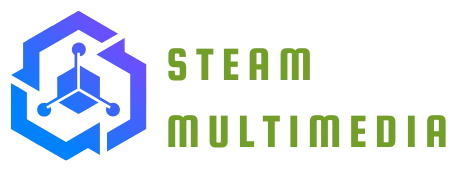Table of Contents
ToggleIn the fast-paced world of marketing, staying ahead of the game is essential. Enter martech tools—the unsung heroes that transform chaos into clarity. Picture this: a world where managing campaigns feels as easy as ordering pizza. With the right tools, marketers can slice through the noise and serve up results that leave clients craving more.
Overview of Top Martech Tools
Marketers utilize several top martech tools to streamline their efforts. These tools facilitate data-driven decisions, enhance customer engagement, and automate tedious tasks.
Customer Relationship Management (CRM) Tools: CRM tools like Salesforce excel in organizing customer data and managing interactions. They provide insights into customer behaviors, allowing for targeted campaigns.
Email Marketing Platforms: Mailchimp and Constant Contact specialize in email outreach, enabling marketers to create customized, engaging content. These platforms offer analytics that measure open rates and conversion results.
Social Media Management Tools: Hootsuite and Buffer simplify scheduling and managing social media posts across multiple channels. They also provide metrics to analyze audience engagement and track growth.
Content Management Systems (CMS): WordPress and HubSpot serve as essential CMS platforms. These systems allow for easy content creation, management, and promotion while optimizing for search engines.
Analytics Tools: Google Analytics remains a staple in measuring website traffic and user behavior. Marketers can leverage this tool to track KPIs and adjust strategies based on real-time data.
Search Engine Optimization (SEO) Tools: Ahrefs and SEMrush provide insights into keyword performance and website health. These tools help marketers improve their online presence and rank higher in search engine results.
Marketing Automation Software: HubSpot and Marketo automate repetitive tasks, allowing marketers to focus on strategy. Automation solutions streamline workflows, enhancing efficiency across campaigns.
These martech tools collectively empower marketing teams to make informed decisions, improve client relationships, and optimize campaigns for better performance.
Key Features to Look For
Identifying the right martech tools involves understanding their key features. Several characteristics significantly impact their effectiveness in streamlining marketing efforts.
Integration Capabilities
Integration capabilities remain crucial for maximizing tool effectiveness. Look for platforms that easily connect with existing software. Seamless connections enable smooth data transfer across different tools and systems. Custom APIs allow marketers to tailor functionality as needed. Platforms like Salesforce and HubSpot exemplify strong integration options, providing users with a cohesive marketing ecosystem.
User Experience
User experience greatly influences how effectively teams adopt and utilize martech tools. Intuitive interfaces make navigation simpler for users at any skill level. Focus on tools that offer a customizable dashboard to meet specific needs. Mobile accessibility enhances usability on-the-go, allowing marketers to manage tasks anytime, anywhere. Solutions like Mailchimp and Buffer prioritize user engagement, ensuring that marketing teams can deliver campaigns efficiently.
Analytics and Reporting
Analytics and reporting functionalities enable data-driven decision-making for marketing teams. Tools should provide comprehensive insights into campaign performance and customer behavior. Detailed reporting features help identify trends and areas for improvement. The ability to visualize data through graphs and charts makes information digestible. For example, Google Analytics delivers in-depth traffic analysis, empowering marketers to refine strategies based on solid evidence.
Top Martech Tools to Consider
Marketers can enhance their strategies and improve results using effective martech tools. Here are three top solutions worth exploring.
Tool 1: Salesforce – Description and Benefits
Salesforce stands out as a leading CRM tool, offering comprehensive features for managing customer relationships and data. With its ability to track interactions across multiple channels, organizations gain a 360-degree view of customers. Enhanced insights lead to informed decision-making and personalized outreach. Automatic task management simplifies daily operations, allowing teams to focus on building relationships rather than tracking data. Integration with various applications ensures seamless data flow, resulting in efficient marketing campaigns.
Tool 2: Mailchimp – Description and Benefits
Mailchimp excels in email marketing, enabling businesses to create and send customized campaigns effectively. This platform offers a user-friendly interface, making it easy for marketers to design visually appealing emails. Automated workflows save time by triggering emails based on user behavior, enhancing engagement. Advanced analytics provide insights into open rates, click-through rates, and subscriber behavior. These features empower marketers to optimize their email strategies and refine targeting efforts for maximum impact.
Tool 3: Google Analytics – Description and Benefits
Google Analytics serves as a vital analytics tool for tracking website performance and user behavior. By collecting data on page views, bounce rates, and user demographics, marketers gain valuable insights into audience interactions. Customizable dashboards provide an easy way to visualize data and track KPIs. Integration with other marketing platforms enhances data analysis, allowing marketers to measure the effectiveness of campaigns across channels. Ultimately, this tool supports data-driven decisions and continuous website optimization.
How to Choose the Right Martech Tool
Selecting the ideal martech tool requires evaluating specific criteria. First, consider integration capabilities. Tools that seamlessly integrate with existing systems prevent data silos, enhancing overall functionality. Popular platforms like Salesforce and HubSpot exemplify strong integration options.
Next, focus on user experience. A tool with an intuitive interface improves adoption rates among team members. Customizable dashboards can further enhance usability, allowing marketers to tailor the workspace to their unique needs.
Another critical factor is analytics and reporting functionality. Robust tools, such as Google Analytics, provide insights into campaign performance and customer behaviors. These insights aid in making informed decisions and optimizing marketing strategies.
Assess scalability as well. A tool that grows with a business can accommodate changing needs, whether through increased users or expanded functionality. Ensure the chosen tool has options for future enhancements.
Additionally, explore support and training resources. Access to comprehensive support allows teams to navigate challenges quickly. Training resources can also facilitate smoother onboarding for new team members.
Finally, evaluate pricing structures. Cost-effective solutions deliver value based on features utilized. Consider whether the pricing aligns with the expected return on investment.
By focusing on these aspects, marketing teams can identify the best tools that meet their needs, ultimately driving improved outcomes and client satisfaction.
Embracing the right martech tools can transform marketing strategies and enhance team efficiency. By prioritizing integration capabilities user experience and robust analytics marketers can select tools that not only streamline their efforts but also drive better results. Salesforce Mailchimp and Google Analytics stand out as top choices that empower marketers to connect with clients personalize outreach and make data-driven decisions.
Investing in these tools ultimately leads to improved campaign performance and greater client satisfaction. As the marketing landscape continues to evolve staying informed about the latest martech solutions will be essential for success in this competitive industry.




